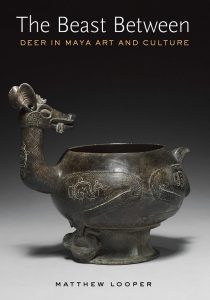CAA News Today
News from the Art and Academic Worlds
posted by CAA — September 30, 2020
|
|
|
|
|
|
Want articles like these in your inbox? Sign up for our weekly newsletter:
International News: The Treasures of the Punjab Archives, Lahore, Pakistan
posted by CAA — September 28, 2020
The following article was written in response to a call for submissions by CAA’s International Committee. It is by Kanwal Khalid, Director of the Punjab Archives, Lahore, Pakistan, and an alumna of the CAA-Getty International Program.
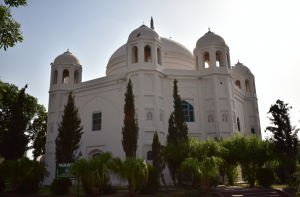
Figure 1. The Punjab Archives, housed in the Tomb of Anarkali, a building from the reign of Mughal Emperor Jahangir (1605-1627). (All photographs in this article provided by the author)
Having spent my career as a university professor, I recently was appointed the director of the Punjab Archives in Lahore. This rich collection is one of the best in South Asia and I am pleased to share a description of the institution, which also includes a library and museum, with readers of CAA News, who will soon be able to access many of the collection’s materials online.
The history of every nation is important and documents that reveal a nation’s history become increasingly precious over time. The majority of these documents are held in archives—collections that are both accumulations of historical data and repositories of record. Pakistan contains many rich archival collections: The National Archives of Pakistan and the National Documentation Centre, both located in Islamabad; the Sindh Archives in Karachi; and the Baluchistan Archives in Quetta. But the oldest of them all is the Punjab Archives in Lahore, located inside the Tomb of Anarkali.
The Punjab Archives is significant both for the immense value of its holdings and for the historical importance of its building (Fig.1), which was built during the reign of Mughal Emperor Jahangir (1605-1627). It was originally a tomb attributed to a woman named Anarkali, traditionally thought to be a concubine of Jahangir’s. According to the date written on the cenotaph, the monument was completed in 1615. The building has witnessed many ups and downs in its four-hundred-year history. After the annexation of Punjab by the British in 1849, the building was used as storage for documents pouring in from all parts of South Asia that were under the control of the British Raj. Two years later it became a church used for Sunday services, but in 1891 it was declared a record office.
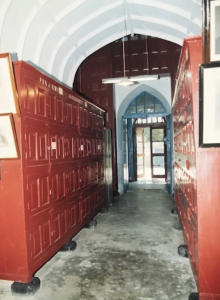
Figure 2. Inside view of the Archives.
Punjab Archives Collection
The Punjab Archives (Figs. 2, 3a-b) holds one of the largest repositories of documents in South Asia and it is responsible for the safekeeping of official documents and records of the Pakistan government. It houses census reports, civil and military gazettes, official files, historical documents, manuscripts, handouts, brochures, pamphlets, maps, notifications, memoranda, lithographs, research papers, journals, magazines, newspapers and periodicals. Many of these cannot be found anywhere else in the world. The archive also includes a fine collection of miniature paintings and seals.
The records in the Punjab Archives date back to the seventeenth century and cover the Mughal, precolonial, colonial and postcolonial eras in South Asia. Primarily the collection consists of:
- Persian Record of Mughal Period, 1629-1858
- Persian Record of Sikh Period, 1799-1849
- Akhbar Darbar-e-Lahore (Daily Court Proceedings of Sikh Rulers), 1835-1849
- Persian Record of British Period, 1809-1890
- Old Persian Newspapers, 1840-1845
- Colonial Agencies Record, 1804-1849
- Record of Princely States in Punjab, 1849-1947
- Record After the Annexation, 1849 to 1947
- Record After Independence, 1947
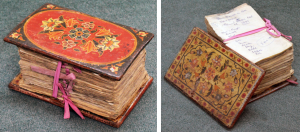
Figure 3a, b. Beautifully illuminated wooden boards used as file holders, first half of 19th century.
The Archival Library
Sir Edward Meclagan served as chancellor of University of the Punjab (1919-1924) and Governor of Punjab (1923). He was a historian whose passion for knowledge is evidenced by his donation of rare and out of print books to the Archives. This initiative led to the establishment of a small but important library that still exists today.
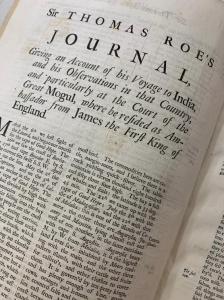
Figure 4. The oldest book in the Archives Library, Sir Thomas Roe’s Journal, 1616.
The collection consists of biographies, reports and travelogues. Currently the library holds more than 70,000 highly valuable reference books. The oldest book is a memoir, Journal of Sir Thomas Roe, which dates to 1616 and recounts the author’s journey to different parts of India (Fig. 4).
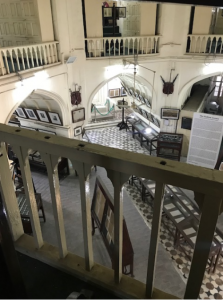
Figure 5. The central hall of the tomb, housing the Archives Museum.
Archives Museum
Another person who played an important role for the Archives was Lord Malcolm Hailey. He went one step beyond his predecessor and established a small museum in 1924 in the central hall of the tomb (Fig. 5). This collection, still maintained today, contains portraits of important Lahore personalities (Fig. 6), along with paintings, prints, maps and lithographs. Mughal Farmans (proclamations), important official letters, old stamps, medals, weapons, and miniatures are also on display (Fig. 7).
Digitization
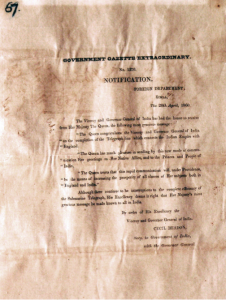
Figure 7. A message from the Queen of England to the viceroy on the completion of the telegraph line to India, 1860.
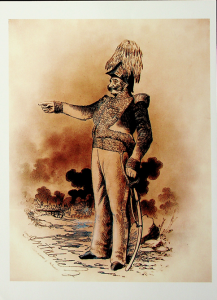
Figure 6. A general of Ranjit Singh’s army, General Avitabile, early 19th century.
For the past several years, the Punjab Archives has been in the process of digitizing its collection to improve accessibility to scholars. Approximately 500,000 pages of historic documents are currently being scanned and catalogued, precluding the need to move the fragile original documents, thus minimizing their wear and tear. A web portal will make these digitized documents accessible under the authorization of the Punjab Archives. This project is a first step towards a long-term strategy of modernizing the Punjab Archives and Libraries. To date, more then 120,000 pages have been digitized. Although the project was scheduled to be completed by June 2021, the Covid-19 pandemic has brought all activities to a standstill. Once completed, the archives online services will be a primary resource for scholars throughout the world. In the meantime we are providing information to any researcher who contacts the Archives Department by email at archivesdirectorate@gmail.com.
New in caa.reviews
posted by CAA — September 25, 2020
Maline Werness-Rude writes about Matthew Looper’s The Beast Between: Deer in Maya Art and Culture, exploring the symbolism and significance of this creature throughout Maya history and mythology. Read the full review at caa.reviews.
News from the Art and Academic Worlds
posted by CAA — September 23, 2020

Change Must Come, Face Me Por Favor, photo by Heather Shirey via Hyperallergic
|
Want articles like these in your inbox? Sign up for our weekly newsletter:
Submit Your Proposal for Graduate Screenings at the 2021 Annual Conference
posted by CAA — September 22, 2020

Film still from Tending Breadth (2019), courtesy of Heather Taylor and Jacklyn Brickman
CAA’s Services to Artists Committee (SAC) invites current graduate students (or 2020 graduates) to submit work for consideration in the 2021 Graduate Screenings: Film/Video, Animations, & New Genres program for the upcoming 109th Annual Conference in February 2021. For the conference, SAC will screen the selected winners online.
Through this screening and exhibition initiative, SAC aims to give the next generation of artists and practitioners an opportunity to display their work in a national forum. Our annual Graduate Screenings celebrates the hard work of graduate students across the nation and world, while exposing their artworks to a broad audience. We look forward to reviewing your submission.
Eligibility
Applicants must be enrolled currently in an MFA (or equivalent MA or PhD) program OR have graduated from a program in the spring or summer of 2020. Due to the university shutdowns in the spring of 2020, SAC will accept submissions from recent 2020 program graduates.
Please use the form below to submit your entry. Submission for consideration is free and membership with CAA is not required (we are collecting this information for statistical purposes). All videos must follow the specifications and meet all technical requirements or they will not be accepted.
SAC Jurors
Farhad Bahram, Indiana State University; Robert Howsare, West Virginia Wesleyan College; Sue Huang, University of Connecticut; Richard Serrano, Art This Week Productions
Guest Juror
Ugochukwu-Smooth C. Nzewi, the Steven and Lisa Tananbaum Curator, Department of Painting and Sculpture at the Museum of Modern Art (MOMA)
Invited guest juror Ugochukwu-Smooth C. Nzewi will select one work from the SAC juried program to be awarded best in show.
Contact: servicestoartists@gmail.com; please include “Graduate Screening Question” in the subject line if you have a question
Deadline for submission: December 4, 2020
Acknowledgment of submission selection: January 19, 2021
Submissions Items for Application Form Input:
—First and last name
—Name of school and department
—Degree (MFA, PhD or MA) and major/concentration
—Year of graduation
—CAA member status (it is not required to be a member)
—If member, CAA membership number
—Narrative bio
—Artist statement
—Personal website (optional)
—Vimeo link (see specs below)
—Film still from your video to be used for promotion purposes (see specs below)
Video/Image Submission Specifications:
Please note that submissions missing any of the below specifications may be disqualified from consideration.
Video:
—5 minutes in maximum length (excerpts accepted)
—H.264 at 1920 x 1280px (MP4 file format)
—Include 2 opening title cards:
—1st card–5 seconds; include your full name (first and last), title of work, year of completion, name of school, department and/or program
—2nd card–5 seconds; include credits for music, sound, other camera people, editing. Even if these were you, include these credits
—Upload submission to Vimeo.com (include your link. Video must remain viewable on Vimeo until February 9th). —Selected participants will be required to upload their hi-res video file to a Google drive in late January and maintain their video on Vimeo till the end of the conference
Image:
—Still from video submission
—960 x 640px (landscape), 72 dpi (JPG file format)
News from the Art and Academic Worlds
posted by CAA — September 16, 2020
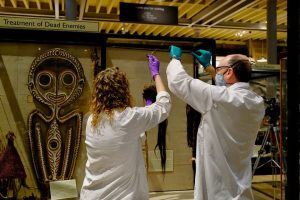
Historically the shrunken head exhibit has been a major visitor attraction at the Pitt Rivers Museum in Oxford © Pitt Rivers Museum, University of Oxford/Photograph: Hugh Warwick, via The Art Newspaper
|
Want articles like these in your inbox? Sign up for our weekly newsletter:
New in caa.reviews
posted by CAA — September 11, 2020
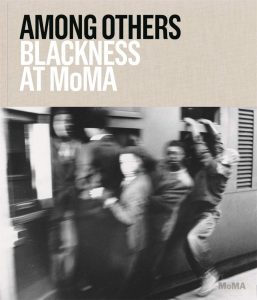
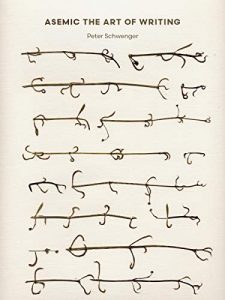
Martha Scott Burton considers Among Others: Blackness at MoMA, edited by Darby English and Charlotte Barat, about the museum’s history of representation and inclusivity. Read the full review at caa.reviews.
Peter D. McDonald examines a unique creative practice through Asemic: The Art of Writing by Peter Schwenger. Read the full review at caa.reviews.
CWA Picks for September 2020
posted by CAA — September 10, 2020
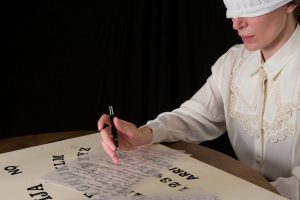
Chiara Fumai, The Book of Evil Spirits, 2015. Film still. On view at the Centre d’Art Contemporain Genève through January 3, 2021. Courtesy the Church of Chiara Fumai
September picks by the Committee on Women in the Arts include a range of online and in-person exhibitions and events featuring works of women artists breaking boundaries. This month we focus on practices that explore boundaries, whether material, conceptual or methodological, and which performatively address space. Often, threshold spaces, literal and metaphorical, are interrogated in order to further explore the potential of the arts in creating change and claiming an equal and just society.
September 4 – 27, 2020
Woman Made Gallery, Chicago, Illinois
A virtual exhibit with works by 120 artists from the United States, Austria, Canada, Great Britain, Greece, Italy, Nigeria, and Turkey and in a variety of media, including painting, drawing, print-making, sculpture, photography, digital works and video, exploring the concept of loss.
September 7 – October 15, 2020
Richard Saltoun, online event
An online exhibition featuring a range of photographic works produced by Jo Spence, including her early commercial works as well as activist, feminist and social photography.
September 5, 2020 – January 7, 2021
Fondazione Berengo, Venice, Italy
An exhibition featuring works of art in glass produced by over sixty contemporary female artists from Europe, the United States, Latin America, Iran, and South Korea. Held in the heart of Murano in the Fondazione Berengo Art Space, an old glass furnace, it references and honors the history of the island and its relationship with glass production and its innovation. The works in the exhibition reference potentialities of glass and its transparency as a metaphor for the future healed from the scars from history.
November 4, 2020 – January 3, 2021
Centre d’Art Contemporain Genève, Geneva, Switzerland
The exhibition presents the first retrospective of Chiara Fumai’s works in which the artist developed the language of performance and made a significant contribution to the feminist aesthetics in the 21st century. Producing uncomfortable situations and environments through the use of concepts of boredom, threat, offense, revolt, vandalism and violence, she explored her ideals of anarchist feminism.
October 2, 2020 – January 3, 2021
Cabaret Voltaire, Zürich, Switzerland
The exhibition features the installation to the operetta which has been developed by Agnes Scherer since 2015. The production will be animated by the artist with Tobias Textor, Soya Arakawa and Claudia Barth at the opening on October 2nd, and on December 8th and 10th. Scherer’s operetta draws inspiration from theatre forms and versatile formats of presentation to activate work of art and give it a magical power.
September 23, 2020 – January 3, 2021
Fondation Louis Vuitton, Paris, France
After being closed due to the COVID-19 health emergency, the Fondation Louis Vuitton reopens on September 23rd with the exhibition featuring 170 works by Cindy Sherman produced between 1975 and 2020, including very recent and unseen series. To coincide with the retrospective, the Fondation will also present a selection of works from its Collection brought together under the title “Crossing Views.” Chosen together with Cindy Sherman and echoing her work, the artworks focus on the theme of the portrait and its interpretations in different mediums and disciplines.
An Update from the Executive Director on CAA 2021
posted by CAA — September 09, 2020
Dear CAA Members,
We write to update you on planning for the CAA 2021 Annual Conference. The Annual Conference Committee has read and reviewed over 800 session proposals and identified those to be included in the robust program, which includes 350 sessions.
CAA will hold its 109th Annual Conference as a virtual program on February 10–13, 2021, with 30 percent of conference content concerning the topic of climate crisis. Scholars and practitioners will address the environment not only through the content of artworks but also by speaking to how we can and should change our professional practices in light of this crisis.
The program for CAA 2021 reflects the vast scholarship and practice of CAA members and includes an impressive number of sessions focused on global and environmental issues with significant (though not exclusive) emphasis on the contemporary. Intersectional content is strongly represented, including sessions concerning race and gender and race and ecology. The practical consequences of COVID-19 are also evident, particularly as related to exhibitions, research, and teaching. This focus reflects the impact of the pandemic on the field, the uncertain future for institutions and individuals, and the sudden greater reliance on technology to solve problems in an ever-changing environment.
Providing content in a virtual format for 2021 preserves and enhances access to the program and allows conference attendance to be expanded beyond its usual boundaries. Individuals will have extended opportunities to hear session content on their own schedules between adjunct positions, family care, and other obligations. Both those who have never attended the CAA Annual Conference and those who haven’t recently will discover new ways to join the community and hear scholarship and practice.
Session presenters will upload their prerecorded presentations, which conference registrants may access online shortly before and through the conference dates. Live Q&A will be scheduled for each session between February 10 and 13, providing the collegial, interactive, and accountable engagement created by attending sessions as a community. Questions about session presentations may be submitted to session chairs after viewing a session in advance of the scheduled live Q&A. Uploaded content will be accessible to registrants for a limited time after the conference dates. We will provide detailed information for presenters and attendees closer to the conference.
We are currently creating the schedule and will be addressing other program components in the early fall. The full program will be posted when the Annual Conference website opens in November. Registration will also open at that time.
Thank you for your patience and flexibility over the next couple of months as the planning continues. We have been creating a list to address your frequently asked questions; please email additional questions to programs@collegeart.org. We look forward to coming together virtually to share scholarship and practice in community.
Best wishes,
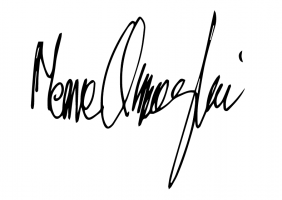
Meme Omogbai
Executive Director and CEO
News from the Art and Academic Worlds
posted by CAA — September 09, 2020
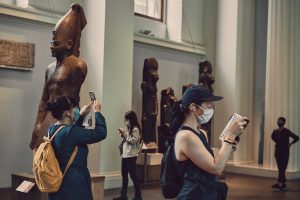
The British Museum recently reopened after a five-month closure due to coronavirus. Photo: Tom Jamieson for The New York Times
|
|
|
|
Want articles like these in your inbox? Sign up for our weekly newsletter:




